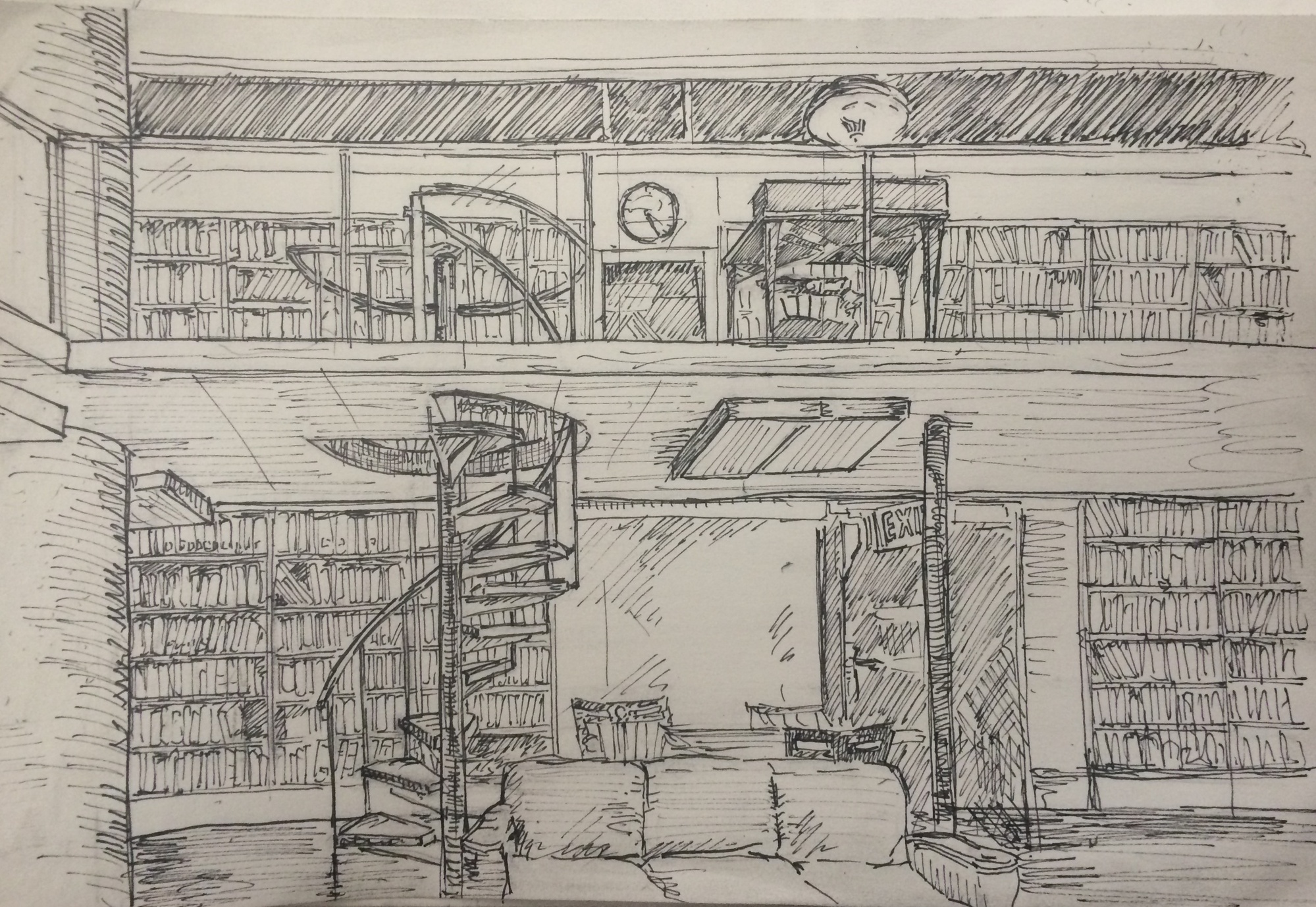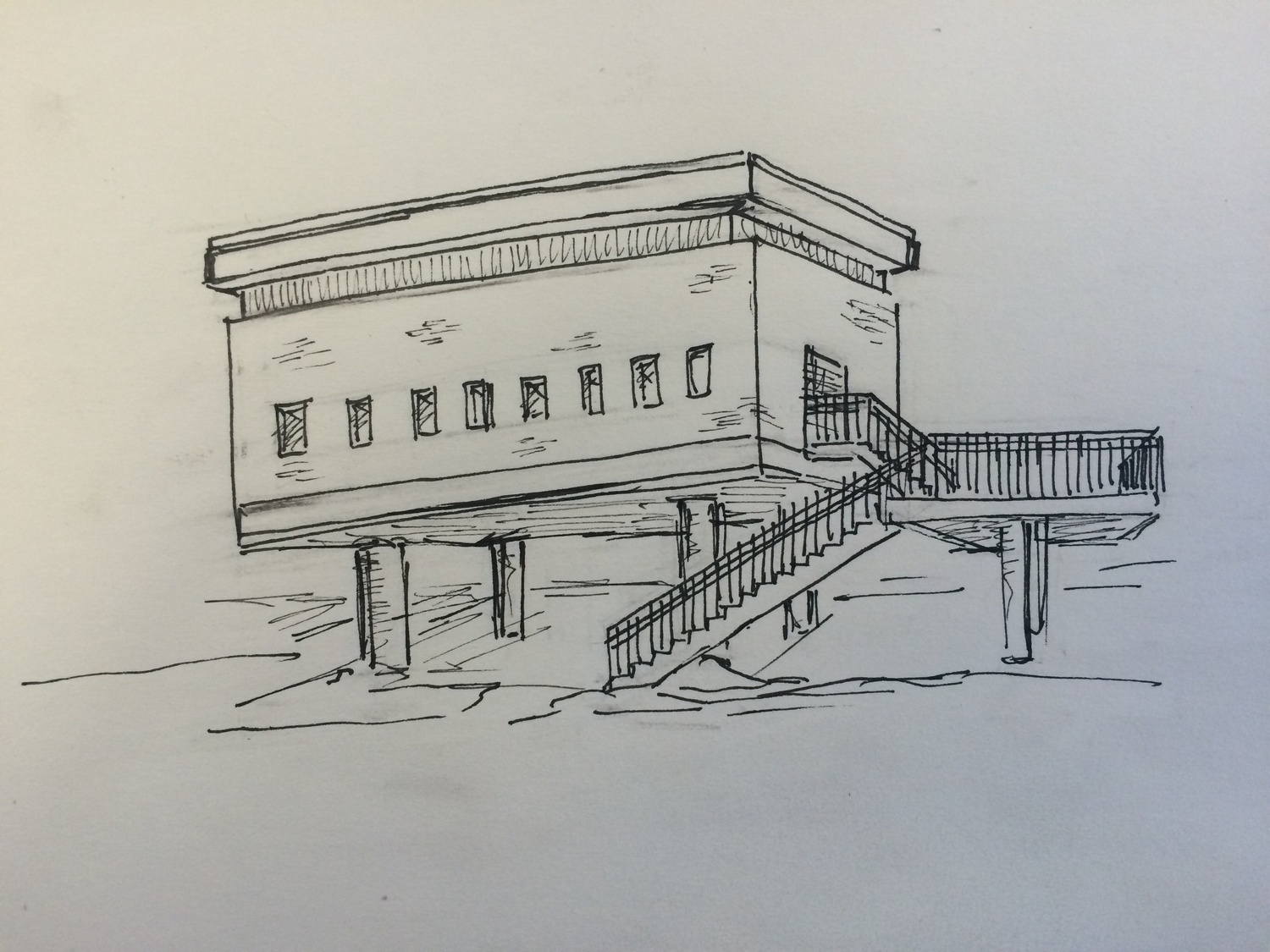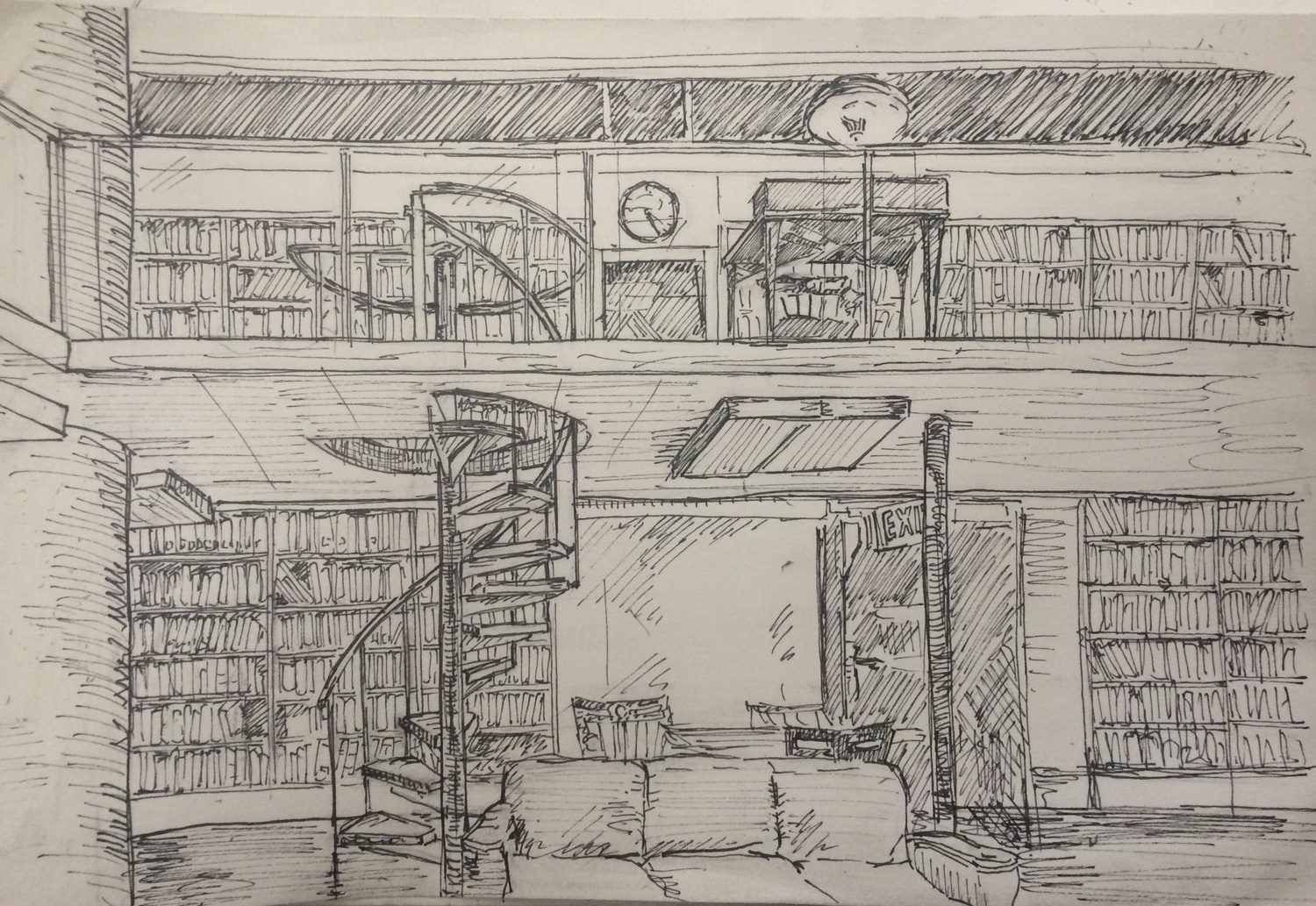
News
HMS Is Facing a Deficit. Under Trump, Some Fear It May Get Worse.

News
Cambridge Police Respond to Three Armed Robberies Over Holiday Weekend

News
What’s Next for Harvard’s Legacy of Slavery Initiative?

News
MassDOT Adds Unpopular Train Layover to Allston I-90 Project in Sudden Reversal

News
Denied Winter Campus Housing, International Students Scramble to Find Alternative Options
The Qube

The interior and exterior of the Qube, Quincy House’s library, are in some ways strikingly different. The inside is colorful, homey, delicate, and decorative. Couches and armchairs are scattered across the space. The floor is covered with ornate rugs and a glass case displays intricate architectural models. A geometric chandelier hangs above and a spiral staircase ascends from the ground floor to the balcony level.
The exterior, on the other hand, is relatively plain and aesthetically simple. Aside from the columns that elevate it from the ground, the only shapes in the facades are rectangles, from the form of the building to the windows to the bricks themselves. Unlike the multi-colored interior, the facade is primarily red and white. The facade’s austere simplicity contrasts with the interior’s playfulness.
Despite their differences, the interior and exterior are united by several key elements. The Qube is elevated, creating space underneath. The balcony inside has a similar effect. Four large columns raise the Qube up from the ground, and four columns support the ceiling inside. The spiral staircase in the Qube is mirrored by an exterior staircase. This staircase is rectangular and therefore more in keeping with the facade’s style, but it, like the spiral staircase, doubles back on itself. Large windows serve as literal portals between outside and in.
The result is a space that is separate yet harmonious with the rest of Quincy House. Silent and spacious, the Qube seems like a library out of a fantasy novel.
The importance of aesthetics is clear: the design of the Qube, with its giant armchairs, bright colors and striking geometries, creates a relaxing yet stimulating space that is ideal for study. In fact, images and design are prominent in libraries in general. Libraries are often architecturally intricate, and sometimes even, as with Widener or the Boston Public Library, decorated with murals and paintings which provide a visual education to the visitor in history and mythology.
Given the comparison and sometimes even competition—think of the phrase “a picture speaks a thousand words”—between visual and written images, the importance of the visual aesthetic in a house of words is intriguing. With a library like the Qube, this comparison is particularly striking. It is easy to see how the visual elements of a library could serve the written elements: Design can be used to create an environment conducive to reading. As libraries are, at their core, spaces for books, this subservience of the visual to the texts seems logical.
But the Qube is neither staffed nor circulating, which means that it is harder to find and use books, suggesting that its purpose is a space for study rather than a container to hold books. The colorful spines of the books add to the visual effect. Here, not only does the visual support the textual, but the textual serves the visual as well.
Want to keep up with breaking news? Subscribe to our email newsletter.


